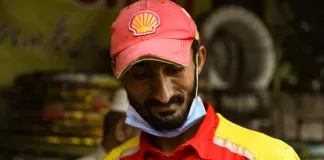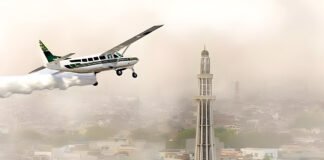The Pakistan Meteorological Department (PMD) has issued a heatwave alert for several parts of the country, warning of unusually high temperatures from April 13 to 18, with Sindh, Balochistan, and southern Punjab expected to be worst affected.
A fresh wave of intense heat is forecast due to prevailing atmospheric pressure, with temperatures projected to rise significantly—6 to 8 degrees Celsius above the normal seasonal average. The impact is likely to begin from April 13, peaking by April 14.
Read More: Dongfeng Box EV Launched in Pakistan in Two Variants
In its advisory, the PMD also flagged the risk of dust storms and gusty winds during the period. Citizens have been advised to take safety measures, particularly vulnerable groups such as children, elderly people, and women.
Officials urged the public to avoid direct exposure to sunlight during the daytime and drink plenty of water.
In preparation for the harsh weather, the Punjab government has initiated emergency steps in vulnerable areas. On directives from Chief Minister Maryam Nawaz, the Provincial Disaster Management Authority (PDMA) held a special meeting in Bahawalpur to review the situation.
The meeting was chaired by PDMA Director General Irfan Ali Kathia along with Commissioner Bahawalpur Musarrat Jabeen. Senior officials, including deputy commissioners and heads of key departments, attended the session.
DG Kathia revealed that 2,000 jerry cans and 10 water bowsers have already been sent to Cholistan to counter water scarcity during the heatwave. Four of these bowsers can carry 12,500 litres of water, while the remaining six have a 5,000-litre capacity.
Additionally, umbrellas are being distributed to help protect residents from direct sunlight in high-risk zones.
“All deputy commissioners must stay on high alert—this is not the time for complacency,” said Kathia. He stressed the need for joint action by all departments including health, education, agriculture, livestock, irrigation, and local government to ensure the safety and well-being of the public.





